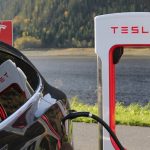Speaking before an audience at Italian Tech Week 2025, Jeff Bezos projected an emerging era where space becomes not only accessible but also a place people will choose to call home. Bezos suggested that people’s motivations to live beyond Earth may shift from necessity to desire, with much of the labor in space performed by robots. His comments drew attention not only for their imaginative quality but also for their grounding in Blue Origin’s latest achievements and strategic direction. While Bezos’s vision remains aspirational, his company’s ongoing activities signal a concrete path toward expanded human and robotic presence off-planet.
When discussing past developments, public statements from Bezos about space have remained ambitious, but earlier years saw less immediate technical progress. Blue Origin’s efforts lagged behind competitors like SpaceX in reaching orbital milestones, and landing reusable boosters proved challenging. Over time, however, Blue Origin has intensified its launches, with recent missions showing technical improvement and firmer plans for lunar and interplanetary activity, hinting at a new phase for the company’s space ambitions.
How Does Blue Origin Plan to Increase Its Space Presence?
Bezos confirmed that Blue Origin, the company he founded while leading Amazon, has recently achieved new technical benchmarks. After the New Glenn rocket’s successful entry into orbital space, Blue Origin is scheduling a second launch, aiming to carry NASA spacecraft on an interplanetary journey toward Mars. Despite missing a booster landing on the initial flight, Bezos indicated the company would pursue the objective again using a booster named “Never Tell Me the Odds.”
What Are the Next Steps for Blue Origin on the Moon and Beyond?
Looking ahead to lunar exploration, Blue Origin plans a 2026 launch to deliver the Blue Moon Mark 1 lander to the Moon’s surface. A larger, hydrogen-powered lander is also in development as part of NASA’s Artemis Program. According to Bezos, the Moon’s accessibility and potential as a fuel depot give it strategic value:
The Moon is a gift from the universe,
Bezos remarked, highlighting its low gravity and energy requirements for rocket fuel transfer.
Why Might Data Centers in Space Become a Reality?
Bezos foresees an increase in orbital infrastructure, particularly solar-powered data centers, in the coming decades. He explained that the consistent availability of solar energy in space could lower operational costs relative to ground-based facilities:
The next step is going to be data centers and other kinds of manufacturing.
Bezos noted that similar advances began with satellite weather forecasting and communication.
Bezos’s predictions fuse technical possibility with broader industrial implications. Blue Origin’s aims reflect a shift from private suborbital missions toward sustained orbital and lunar operations, mirroring a competitive environment where companies and governments pursue multipurpose space infrastructure. For interested observers and industry participants, monitoring the performance of New Glenn launches—particularly regarding booster reusability and mission versatility—will indicate whether Blue Origin can reach its stated goals. Those considering careers or investment in space technology may note the growing emphasis on automation, infrastructure in orbit, and lunar logistics. As the sector matures, the interplay between visionary statements and technical execution will remain pivotal for Blue Origin and other key players.
- Jeff Bezos shared Blue Origin’s space ambitions at Italian Tech Week 2025.
- The company plans further rocket launches, lunar landings, and orbital data centers.
- Space infrastructure could soon become more widespread and economically feasible.










